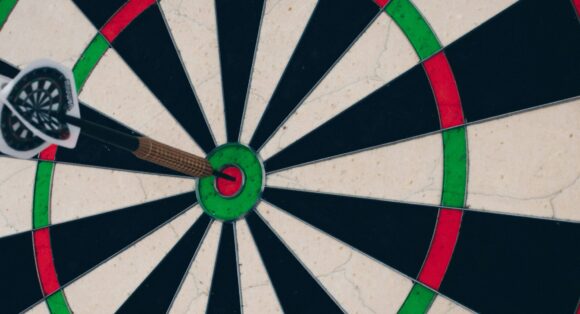Your brand is perhaps your professional services firm’s most valuable asset. If this is true, then developing a stronger, more engaging brand is your single most important task. Think this sounds like an exaggeration? Consider what a professional services brand is and how a brand development strategy can guide you on the right path.
Your Brand Defined
A professional services brand is the product of a firm’s reputation and its visibility in the marketplace. As a result, one way to measure the strength of your brand is with the formula, Reputation X Visibility.
Any successful marketing program has to address both of these factors. Your firm’s reputation is not enough. Prospective buyers have to be able to find you. Nor is being highly visible enough. People need to value the services and products you have to sell.
That means there is another important dimension of your brand, as well: how relevant it is to your target client audience. We’ll explore this point more a bit later, but first let’s explain what we mean when we say brand development.
What is Brand Development?
Brand development is the process of creating and strengthening your professional services brand. When Hinge helps firms develop their brands, we divide the process into three phases.
- First, we make sure we get your brand strategy right and aligned with your business objectives.
- Second, we develop all the tools you will need to deliver your brand to the marketplace. This includes a range of things, such as your logo, tagline and website.
- Finally, we strengthen your new or updated brand. Think of this as a marketing program designed to boost both your reputation and your visibility.
Your brand development strategy is how you go about accomplishing these tasks. To make the task a bit easier to digest, we’ve broken the brand development strategy into 10 steps.
A 10-Step Brand Development Strategy
1. Consider your overall business strategy
A strong, well differentiated brand will make growing your firm much easier. But what type of firm do you want? Are you planning to grow organically? Your overall business strategy is the context for your brand development strategy, so that’s the place to start. If you are clear about where you want to take your firm, your brand will help you get there. When considering your strategy, consider not only what you will be doing but also what you will not be doing (and who you will not be serving).
2. Identify your target clients
Who are your target clients? If you say “everybody” you are making a very big mistake. Our research clearly shows that high growth, high profit firms are focused on having clearly defined target clients. The narrower your focus, the faster you are more likely to grow. The more diverse your target audience, the more diluted your marketing messaging must be. So how do you know if you have chosen the right target client group? That’s where the next step comes in.
When you focus on a particular target audience—whether it’s an industry (or group of related industries), a role (for example, CEOs) or something else—you become a “specialist.” Specialists are not only differentiated from their non-specialist brethren, they can command higher fees.
3. Research your target client group
Firms that do systematic research on their target client group grow faster and are more profitable (see figure below). Further, those that do research more frequently (at least once per quarter) grow faster still.
Research equips you with several advantages. It helps you understand your target client’s perspective and priorities, anticipate their needs and create messaging that will resonate with them. It can also tell you how your clients perceive your firm’s strengths, weaknesses and overall brand. Equipped with this kind of intelligence, you can dramatically lower the marketing risk associated with brand development.

4. Develop your brand positioning
By this point, you have enough information to determine your firm’s brand positioning (also called market positioning) within your marketplace. How is your firm different from others and why should potential clients within your target audience choose to work with you?
A positioning statement is typically four to six sentences in length and captures the essence of your brand positioning. It must be grounded in reality, as you will have to deliver on what you promise. If your current differentiators are shared by some of your competitors, you can add aspirational language that points to the firm you plan to become. Just make sure that these aspirations are real and achievable.
5. Develop your messaging strategy
Your next step is a messaging strategy that translates your brand positioning into messages you can deliver to your various target audiences. Your target audiences typically include potential clients, potential employees, referral sources or other influencers and potential partnering opportunities, to name a few of the usual suspects.
While your core brand positioning must be the same for all audiences, each audience will be interested in different aspects of it. The messages to each audience will emphasize the most relevant points. Each audience will also have specific concerns that must be addressed, and each will need different types of evidence to support your messages. Your messaging strategy should address all of these needs. This is an important step in making your brand relevant to your target audiences.
Your messaging strategy may include sample headlines, a list of your differentiators, your elevator pitch (adjusted to each audience, if needed) and a messaging architecture document that lays out key messages for each audience, common objections, responses to overcome those objections and any proof points to support your arguments.
6. Develop your name, logo and tagline
For many firms, a name change is not required. But if you are a new firm, are undergoing a merger or are burdened with a name that no longer suits your positioning, a name change may be in order. Even if you don’t change your firm’s name, a new logo and tagline may be required to support your new brand positioning.
Remember, your name, logo and tagline are not your brand. They are components of your brand identity—the visual and verbal expression of your brand. Your logo is a proxy for your brand, but the ideas and emotions the people associate with your brand coalesce from many different touch points.
If you do develop a new name, logo or tagline, keep in mind that they are for your marketplace and should be judged on how well they communicate to your audience. It’s very easy to fall into the trap of looking for solutions that you love or that reflect attributes of an unrelated brand you admire.
7. Develop your content marketing strategy.
We could have called this step “develop your marketing strategy.” But we didn’t. Instead we call for a content marketing strategy.
Why? Content marketing is particularly well suited to professional services firms in the Internet age. It does all things traditional marketing does but it does them more efficiently. In a nutshell, it uses valuable educational content to attract, nurture and qualify prospects.
Remember that your brand strength is driven by both your reputation and visibility. Increasing visibility alone, without strengthening your reputation, is rarely successful. That’s why traditional “awareness-building” advertising or sponsorships so often yield disappointing results. On the other hand, content marketing increases both visibility and reputation at the same time. It is also the perfect way to make your brand relevant to your target audiences.
8. Develop your website.
Your website is arguably your single most important brand development tool. It is the place where all your audiences turn to learn what you do, how you do it and who your clients are. Prospective clients are not likely to choose your firm solely based on your website. But they may well rule you out if your site sends the wrong message.
Further, your website will be home to your valuable content. That content will become the focus of your search engine optimization (SEO) efforts so that prospects, potential employees and referral sources can find you and learn about your expertise and your firm. Online content is central to any modern brand development strategy.
Professional services websites come in two types. The first is a branding site, which tells your story and describes who you are, who you serve and what you do. In short, it conveys your brand message. The second type does all of the above and also generates leads, builds engagement and moves prospects toward a sale. We call these High Performance Websites.
9. Build your marketing toolkit.
The next step in the process is to build out the remainder of your marketing toolkit. This might include one-page sales sheets that describe core services offerings or key markets served. In addition, you may need a pitch deck and/or brochure that provides a concise overview of your firm and your key offerings. These pieces are rarely printed anymore, but if you attend in-person events and conferences, you may want printed marketing collateral on hand.
Increasingly, this marketing toolkit also includes videos. Popular video topics include firm overviews, case studies and “meet the partner” videos. If prepared appropriately, these tools serve not only a business development function but can also enhance your brand.
10. Implement, track, and adjust.
The final step in the brand development process may be one of the most important. A winning brand development strategy doesn’t do much good if it is never implemented. You might be surprised how often that happens. A firm develops a solid strategy with all the good intentions it can muster. Then reality intervenes. People get busy with client work and brand development tasks get put off… then forgotten.
That’s why tracking is so important. We strongly recommend tracking both the implementation of the plan and results. Did the strategy get implemented as planned? What happened with the objective measures, such as search traffic and web visitors? How many new leads, employee applications and partnering opportunities were generated? Only by tracking the entire process can you make sure you are drawing the right conclusions and making the right adjustments.
There you have it — a 10 step brand development process to drive the growth and profitability of your firm. As you review this article, ask yourself how strong your firm’s brand is and what you need to do to make it more differentiated, visible and engaging.
A Brand Development Example
Let’s consider the following real-world example of brand development. Heller Consulting is a technology consulting firm for nonprofits that approached Hinge when their marketing program was not delivering the results they desired. As a brand, they struggled to define themselves in the marketplace.
We began our engagement with research to understand how Heller was perceived by their prospects and clients. One discovery from this research was that their brand had unintentionally developed a narrow reputation as fundraising technology experts. They wanted to be known for more. With this brand research in hand, we were ready to proceed to the next phase of the brand development process.
We used what we learned about their firm’s strengths and how they compared to the competitive landscape to develop a set of key differentiators. This exercise led to the development of a compact positioning statement and persuasive messaging they could use in all their marketing materials.
One of the key areas where this new marketing language needed to be reflected was on the Heller website. Hinge helped Heller redevelop their website for an improved user experience and to incorporate they new positioning and messaging. We also made it easier to find and consume their thought leadership—gating the most valuable content to help turn web visitors into leads. It was now easier than ever for Heller to be identified and known as a thought leader in their space.
The results? Heller experienced a 400% increase in website conversions and a 50% increase in organic search traffic after a two year period. “Hinge gave us the foundation for a powerful, long-term marketing program,” said Heller COO Smita Vadakekalam.
How Hinge Can Help
An effective brand development strategy needs to connect with the new professional services buyer. Hinge’s Branding Program can help your firm stand out from the competition and build a brand that drives sustained growth.
Additional Resources
- Get strategies, tips, and tools for developing your firm’s brand with Hinge’s Brand Building Guide for Professional Services Firms.
- Download a free copy of the Inside the Buyer’s Brain, Fourth Edition research report to learn how to build a powerful brand to help your firm close more sales.
- Uncover your firm’s true differentiators and give buyers a reason to pick you out of the crowd in Differentiation, Positioning & Messaging through Hinge University.







